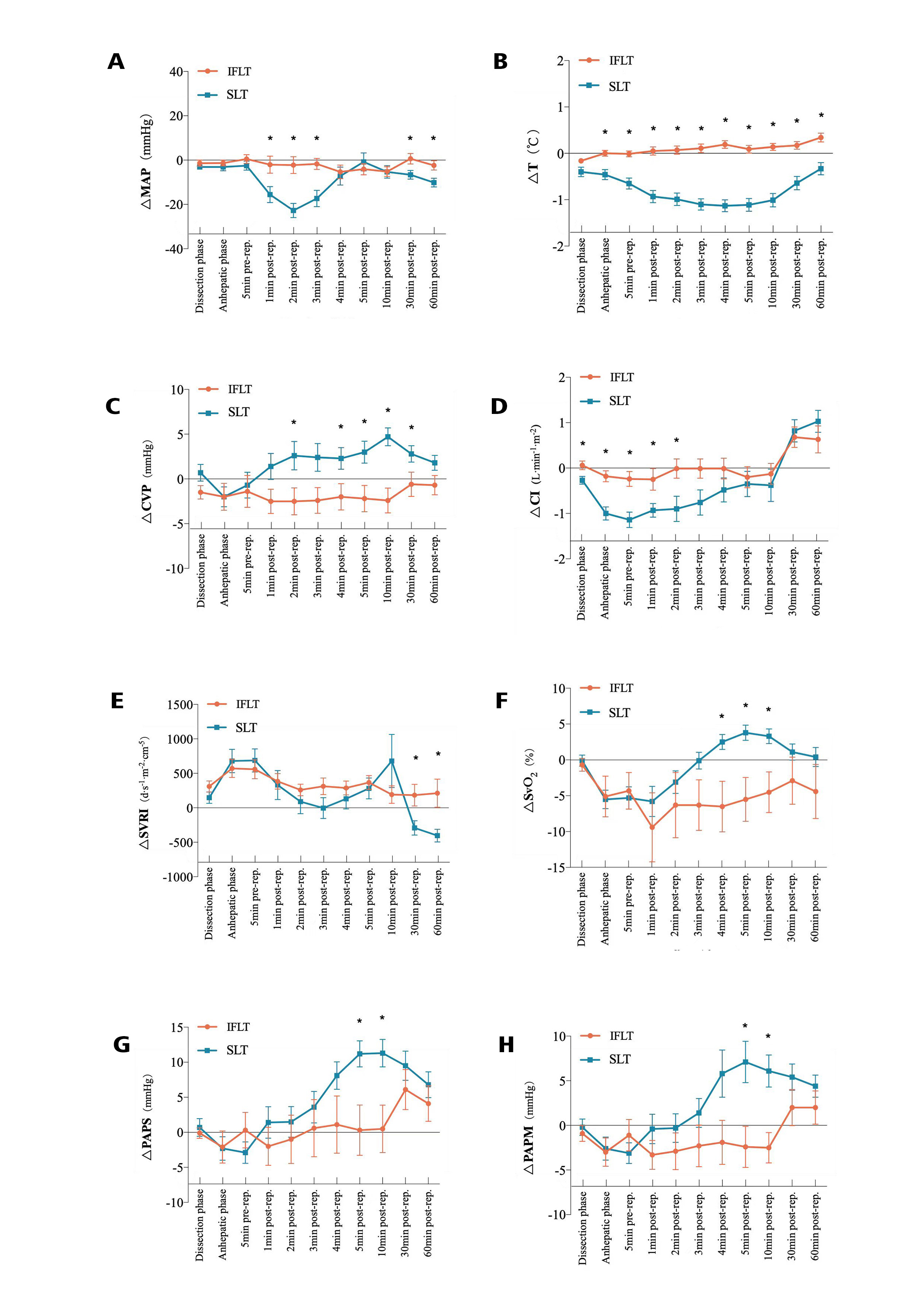Protective Effect of Ischemic-Free Liver Transplantation Technique on Distant Multiple Organ Function
1Organ Transplant Center, The First Affiliated Hospital of Sun Yat-sen University, Guangzhou, China, 2Department of Anesthesiology, The First Affiliated Hospital of Sun Yat-sen University, Guangzhou, China
Meeting: 2019 American Transplant Congress
Abstract number: D262
Keywords: Graft function, Liver transplantation, Machine preservation
Session Information
Session Name: Poster Session D: Non-Organ Specific:Organ Preservation/Ischemia Reperfusion Injury
Session Type: Poster Session
Date: Tuesday, June 4, 2019
Session Time: 6:00pm-7:00pm
 Presentation Time: 6:00pm-7:00pm
Presentation Time: 6:00pm-7:00pm
Location: Hall C & D
*Purpose: Hypothermia, hypoxia and ischemia-reperfusion injury (IRI) in standard liver transplantation (SLT) are the main factors that affect graft function and cause damage to remote organs. We aimed to compare the hemodynamics and multi-organ function between ischemia-free liver transplantation (IFLT) and SLT using cold storage as a preservation method.
*Methods: We prospectively collected perioperative data from IFLT and SLT, and compared the stability of hemodynamics, the incidence of post-reperfusion syndrome, and the function of heart, lung, kidney between the two groups.
*Results: Between July 2017 and April 2018, a total of 14 cases of IFLTs and 28 cases of traditional standard liver transplantations were included in our study. Compared with IFLT group, the SLT group had a significantly decreased blood temperature (T) (ΔT -0.46±0.58 vs. 0.00±0.24, p=0.007) and cardiac index (CI) (ΔCI-1.00±0.69 vs. -0.18±0.40, p=0.000) in anhepatic phase. After reperfusion, the mean arterial pressure (MAP) of the SLT group (ΔMAP2min -22.8±17.0 vs. -2.3±14.2, p=0.000) declined dramatically, meanwhile pulmonary artery systolic pressure (ΔPAPS5min 11.2±7.7 vs. 0.3±11.4, p=0.006) and central venous pressure (CVP) (ΔCVP5min 3.0±5.8 vs. -2.2±4.9, p=0.017) and mixed venous saturation (SvO2) (ΔSvO25min 3.8±4.3 vs. -5.5±10.2, p=0.014) increased significantly compared to that of the IFLT group. In postoperative period IFLT group had a lower incidence of renal replacement therapy (7.1% vs. 17.9%, p=0.640), and shorter intensive care unit (ICU) stay (41.6h vs. 65.2h, p=0.040).
*Conclusions: Compared with the SLT procedure, patients with IFLT have more stable intraoperative blood temperature and hemodynamics. The IFLT is associated with minimal effects on multiple organs such as heart, lung and kidney. Therefore, IFLT can reduce the perioperative risks for the recipients.
To cite this abstract in AMA style:
Wang L, Guo Z, Yang L, Xiong W, Huang S, Zhang T, Tang Y, Zhang Z, Zhu Z, Zhu C, He X. Protective Effect of Ischemic-Free Liver Transplantation Technique on Distant Multiple Organ Function [abstract]. Am J Transplant. 2019; 19 (suppl 3). https://atcmeetingabstracts.com/abstract/protective-effect-of-ischemic-free-liver-transplantation-technique-on-distant-multiple-organ-function/. Accessed December 23, 2025.« Back to 2019 American Transplant Congress

